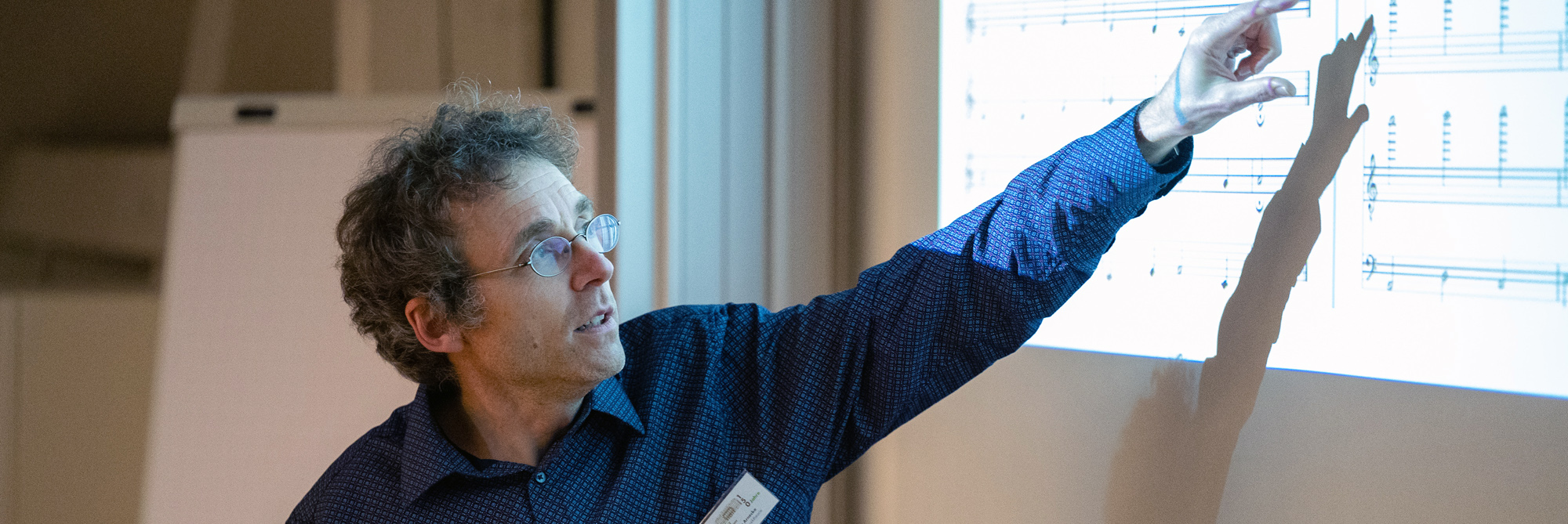Book series: "Paraphrases" – Contributions to Music Theory from Weimar
The title "Paraphrases" is a tribute to the namesake of the Weimar University: Franz Liszt created early connections between composition, sounding analysis of works, mediation and interpretation in his piano paraphrases. In this tradition, the series is dedicated to important music theory topics and offers in-depth insights into the development and analysis of musical concepts. Each volume in the series focuses on a specific aspect of music theory.
An exemplary work being Helmut Well's study of sound organization from the 16th to the 18th century, which analyses the theoretical concepts of the period - such as scale, chord and function - in the context of musical practice. Another volume sheds light on the life and work of Siegmund von Hausegger, an important representative of the Munich School. Here, the author Florian A. Kleissle integrates biographical aspects into a differentiated examination of the composer's symphonic works.
Each volume in the "Paraphrases" series thus contains well-founded music-theoretical analyses and is aimed at music theorists and scholars as well as anyone seeking a deeper understanding of the theoretical foundations of music.
Libretti by Reinhard Febel. Benjamin Button and other works

Volume 8
Marcus Aydintan
Georg Olms Verlag Hildesheim. 2024. 384 pp.
Reinhard Febel's music theater works cover a broad thematic spectrum from fantastical and strange stories to science fiction - some deal with historical figures such as Oswald von Wolkenstein or Howard Hughes, in others famous paintings come to life as stage sets. This edition contains all the libretti written by the composer himself, including the text of the recently composed opera Benjamin Button. In accompanying essays, Jörn Arnecke, Marcus Aydintan, Jeffrey Arlo Brown and Ulrich Alexander Kreppein reflect on the music of Reinhard Febel.
Aufklänge. Der Komponist und Dirigent Siegmund von Hausegger
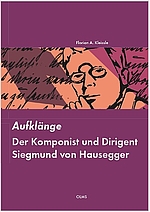
Volume 7
Florian A. Kleissle
Georg Olms Verlag Hildesheim. 2022. 682 pp.
As a composer, conductor and pedagogue, Siegmund von Hausegger was surrounded by Richard Strauss and the Munich School, which has so far been little researched. This study traces in detail the career of the highly educated humanist artist, who learnt the craft of composition exclusively from his father Friedrich von Hausegger - the man whose work Die Musik als Ausdruck (Music as Expression) offered many musicians of the time the much-desired alternative to Eduard Hanslick's Vom Musikalisch-Schönen. Of Siegmund von Hausegger's now newly recorded major works, the five Symphonic Poems, the Natursymphonie, premiered in 1911, stands out as an important monument of 'musical Jugendstilism'. All five works are analysed in detail in this book, taking into account relevant theoretical writings from the middle of the 19th century onwards. As the compositions are closely related to specific circumstances in Hausegger's life, the analyses of the works appear embedded in his biographical development. They reveal an outwardly self-confident but inwardly fragile artistic personality who, in the face of the political upheavals of his time, repeatedly attempted to exert individual influence on the rapidly changing cultural events of the first half of the 20th century from an elitist, monarchist mould.
Skala - Akkord - Funktion. Theoriegeschichtliche und satztechnische Aspekte der Klangorganisation vom 16. bis zum 18. Jahrhundert
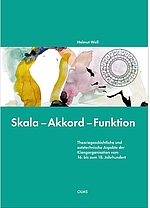
Volume 6
Helmut Well
Georg Olms Verlag Hildesheim. 2019. 443 pp.
The always problematic relationship between individual works and theoretical concepts came to a particular head in the process of change towards major-minor tonality. The theoretical concepts with which the horizontal, vertical and tonally hierarchical moments of the musical movement were grasped were developed at a historical distance of more than 200 years. This makes an adequate technical and analytical description of the individual musical work in the period between Glarean's major and minor scales and Rameau's ideas of chord linking considerably more difficult. The aim of the present study is to show some central moments in the history of theory with regard to the organisation of sound in the period mentioned. Brief reviews of earlier music theory are just as necessary as a brief outlook on the further history of music theory as a theory of harmony. This is supplemented by considerations of works which, from the concrete analytical and compositional point of view, are intended to clarify the respective foundations of tonal organisation and the position of the composition in relation to the history of theory.
Praktische Musiktheorie ("Practical Music Theory")
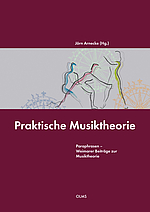
Volume 5
Jörn Arnecke (Ed.)
Georg Olms Verlag Hildesheim. 2017. 324 pp.
In five chapters, the book brings together the concepts and methods of practical music theory. "Learning through playing" reveals three surprising ways to approach music theory. "Playing and learning" inverts this perspective, focusing on the connection between music theory and interpretation, explained by Peter Gülke, among others. "Research from practice’ starts by looking at the approach of instrumental practice, from the partimento tradition through to the most delicate investigations of microtones. ‘Practice for research’ reports on singing, movement and transcription, each leading to findings in different ways. The conclusion comes in the form of a practical project: students studying a major subject in the Master’s Degree in Music Theory at the University of Music FRANZ LISZT Weimar developed their own chapter, shedding light on ‘Practical education’ in the music school domain.
The focus lies on the artistic qualities of the subject: this volume demonstrates how far practical applications can go in music theory. It is dedicated to Matthias Franke, a scholar of music theory who died at a young age, and contains his final lecture.
Warum ist Musik erfolgreich? Beiträge der IX. Weimarer Tagung "Musiktheorie und Hörerziehung" (Why is Music Successful? Papers from the IX Weimar conference "Musiktheorie und Hörerziehung")
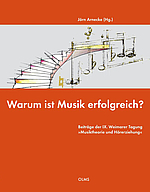
Volume 4
Jörn Arnecke (Ed.)
Georg Olms Verlag Hildesheim. 2016. 202 pp.
Success cannot be reduced to a single common denominator. However, you can formulate approaches to it from various perspectives, without reducing art to a recipe. The question as to what promises success can be discussed by turning this wording around: what (doubtless high-quality) music did not enjoy success? What success was linked to the particular era at hand, not leaving any traces in the generations that followed? The actual meaning of success also always needs to be stated. What criteria, then, can music theory use to make the success or failure of a work, or of a composer, tangible?
This volume is divided into five topic-areas, each encompassing two contributions. Firstly, two undisputedly successful composers are interviewed, in order to discover their strategies, before the inverse is explored: artists whose artistic quality is higher than the level of their reception. We meet successful artists whose success remains tied to their era, along with artists who oscillate between being forgotten and being rediscovered. Finally, musical modernism is explored.
Organisierte Post-Tonalität. Studien zu einer Synthese von Pitch-class set theory und Schichtentheorie Heinrich Schenkers (Organised Post-Tonality. Studies on a Synthesis of Pitch-Class Set Theory and Heinrich Schenker's Strata Theory)
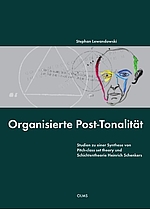
Volume 3
Stephan Lewandowski
Georg Olms Verlag Hildesheim. 2017. 231 pp.
Which laws does the organisation of tone material in post-tonal music from the era of ‘Classical Modernism’ follow? Is there ‘free atonality’? How do harmony and counterpoint interact with each other in this music? And, to trace all this, is it possible to bring the two paradigms of music theory, pitch-class set theory as proposed by Allen Forte, and strata theory as proposed by Heinrich Schenker, together to form a competent, useful synthesis? The study explores these questions of music theory within a historical summary of the discourse regarding existing approaches to combining pitch-class set theory and strata theory, as well as by analysing selected compositions by Arnold Schönberg.
Musiktheorie und Vermittlung. Didaktik · Ästhetik · Satzlehre · Analyse · Improvisation (Music Theory and Teaching · Didactics · Aesthetics · Harmonics · Analysis ·Improvisation)
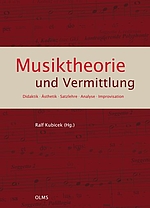
Volume 2
Ralf Kubicek (Ed.)
Georg Olms Verlag Hildesheim. 2014. 384 pp.
This work focuses on the question of how to teach the content of the subject of music theory at a high creative level. The papers published here, written for the VI International Congress of the Society of Music Theory in Weimar, provide experience and expertise, offer teachers and learners an array of new stimuli, and present didactic concepts. With contributions on Gregorian repertoire through to György Ligeti’s piano concerto, it demonstrates that the subjects of music theory and aural training can draw on an exceptionally broad range in the present day. In addition, it offers reflections on the aesthetic implications of harmonics, as well as numerous examples for the contemporary analysis of works and aural analysis. This illustrates how vivid and interesting music theory can be, and how this subject can be home to stimulating thoughts, reflections and discussions relating to music notes themselves.
Von Brücken und Brüchen. Musik zwischen Alt und Neu, E und U. (Of Bridges and Breaks. Music from Old to New, Serious to Light.)
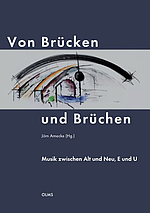
Volume 1
Jörn Arnecke (Ed.)
Georg Olms Verlag Hildesheim. 2013. 231 pp.
In this volume, the annual Weimar conference "Musiktheorie und Hörerziehung" is documented in writing for the first time.
Building bridges: at the 2012 conference, this was primarily intended to occur through the power of contrasts. On the one hand, there was research on the new in old music, and the old in new music; on the other, the opposition often marked with reference to ‘serious’ and ‘light’ music was to be explored from a modern-day perspective. This gave rise to useful connections, for example, between the traditional and the avant-garde, but also findings relating to delineations and separations. As a result, it would be possible to talk of both bridges and breaks.
Building bridges: this also stands, symbolically, for the book series of the Centre of Music Theory at the University of Music FRANZ LISZT Weimar, which began with this volume. It strives to create connections between musical theory and pedagogy, just as the Weimar conference "Musiktheorie und Hörerziehung" has done since it was established.
